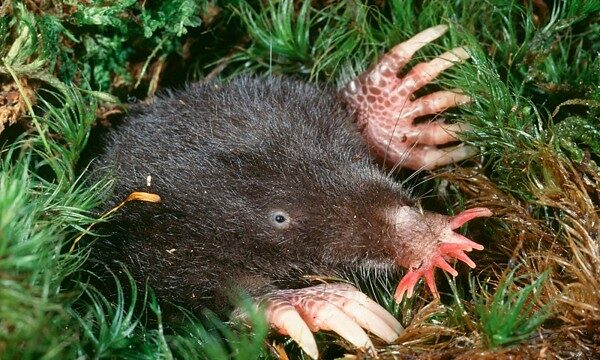In May 2010, Bob Shoudt, a proclaimed vegetarian, astonished many by setting a Major League Eating record, devouring 7.9 lbs of Curley’s Fries in a mere ten minutes—a feat even more remarkable given his separate record for consuming beef brisket barbecue sandwiches. However, nature presents a rival in speed-eating, one that might leave Shoudt in its dust. Enter the star-nosed mole, a true master in the art of rapid foraging.
Known as the fastest forager in the world, the Condylura cristata mole can locate, assess, and consume its food in 230 milliseconds—and that’s without even trying very hard. The fastest the mole has been observed to find and eat prey is 120 milliseconds. That’s around a 10th of a second and 1/6th the time it takes a human being to see and respond to a red light.
How does it eat so fast and what’s that thing on its face?!
The star-nosed mole has a number of traits that contribute to its overall eating efficiency. First and foremost, that 22-tentacled formation that looks a bit like H.P. Lovecraft’s Cthulhu is actually the mole’s nose. Those tentacles work, too, allowing the mole to feel around in the dark for tasty morsels before snapping them up with teeth which are rather like tweezers.
It gets even weirder, though.
A neuroscientist from Vanderbilt University named Brian Catania has studied these creatures and found that the star-nosed mole actually has the same pattern of its nose imprinted in its brain structure. This seems to indicate that the mole might be getting a star-shaped view of the world as it processes all that touch data (at almost the maximum speed that a nervous system can support!).
Luckily for us humans, the mole is only 7.6 inches (19 cm) long and weighs about 1.8 ounces (51 grams).
Did we mention Condylura cristata is semi-aquatic?
Typically found in Canada and the northeast parts of the U.S., the star-nosed mole is not limited to simply burrowing when it comes to finding a yummy snack. It has adapted to include the marsh areas in its hunting grounds. While a strictly burrowing mole is going to be limited to eating worms, when it gets in the water, those tentacles help it to detect also aquatic insects, mollusks, and even tiny fish for a little variety in its diet. That’s not its only hunting technique: the star-nosed mole also blows and re-inhales bubbles underwater and uses the information to track its prey. Though almost completely blind, the mole is getting all kinds of sensory data about its surroundings. It certainly tickles the mind to imagine what the world must look like to this small but powerful animal.
Though you may only encounter the star-nosed mole within the digital confines of the internet, should you visit certain regions of the U.S. or Canada, pause and reflect upon this marvel of nature. This swift, unassuming forager is diligently, nay, rapidly, carrying out its dining ritual, just beneath the very ground you tread!


